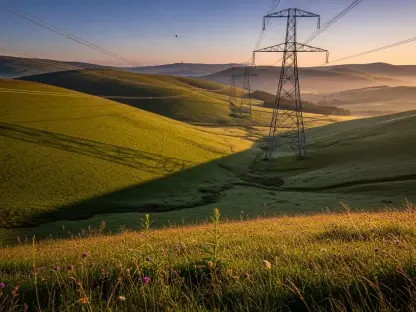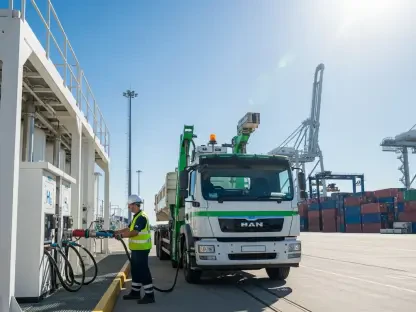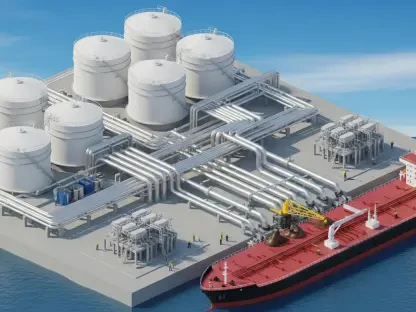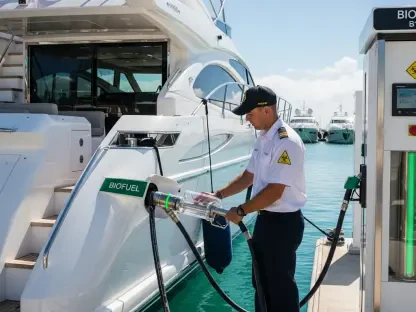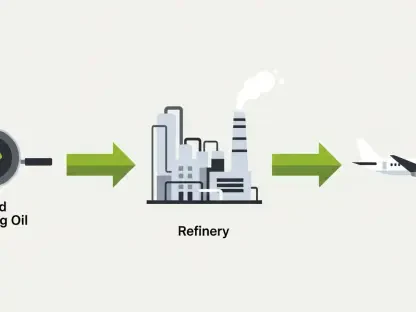Unraveling a Critical Energy Crisis in Central Europe
Imagine a region heavily reliant on a single energy lifeline, suddenly cut off by geopolitical conflict, sending shockwaves through markets and governments alike, as Hungary and Slovakia face the harsh reality of halted Russian crude oil supplies through the Druzhba pipeline due to a suspected Ukrainian attack. This disruption not only threatens immediate energy stability but also exposes deep vulnerabilities in Central Europe’s energy markets. The incident underscores the high stakes of dependency on Russian resources amidst ongoing tensions, raising urgent questions about market resilience and strategic alternatives.
The purpose of this market analysis is to dissect the immediate and long-term impacts of this supply interruption on the energy sector, focusing on Hungary and Slovakia as key players in a broader European context. It aims to provide stakeholders with actionable insights into current trends, potential market shifts, and forecasts for energy security. By examining data, geopolitical dynamics, and industry responses, this analysis seeks to illuminate pathways for mitigating risks in an increasingly volatile landscape.
This discussion will delve into the specifics of the halted oil flows, analyze the market reactions of affected nations, and project future trends in energy diversification. The focus will be on understanding how such disruptions influence oil pricing, supply chain strategies, and investment priorities. With Central Europe at a crossroads, the analysis will offer a roadmap for navigating the turbulent intersection of energy markets and geopolitical strife.
Deep Dive into Market Trends and Energy Sector Projections
Immediate Market Reactions to the Pipeline Halt
The sudden stoppage of Russian oil through the Druzhba pipeline has sent ripples through energy markets in Central Europe, with Hungary and Slovakia facing immediate supply concerns. This pipeline, a critical artery for crude oil, previously delivered significant volumes—around 95,000 barrels per day to Hungary alone, based on recent Russian export figures. The disruption has heightened fears of localized shortages, though both Hungarian oil company MOL and Slovak operator Transpetrol have assured markets that regional supply security remains intact for now due to existing stockpiles and operational contingencies.
Despite these reassurances, market sentiment reflects unease, as oil price volatility has spiked in the region due to uncertainty over restoration timelines. Traders are closely monitoring technical repair efforts on a damaged transformer station, with no clear schedule for resumption of flows. This uncertainty has prompted a slight uptick in spot prices for alternative crude sources, as buyers scramble to secure imports from non-Russian suppliers. The immediate challenge lies in balancing short-term needs with the cost implications of sourcing oil from distant markets like the Middle East or North America.
Beyond pricing, the incident has intensified scrutiny on inventory levels and storage capacities in affected countries. Hungary, with its near-total reliance on the Druzhba pipeline, faces a tighter supply buffer compared to Slovakia, which has more diversified internal distribution networks. Market analysts suggest that while the current halt may not trigger an immediate crisis, prolonged disruptions could strain reserves, pushing companies to prioritize emergency procurement strategies over long-term contracts.
Geopolitical Influences on Energy Market Dynamics
Shifting focus to the broader geopolitical landscape, the suspected Ukrainian attack on the pipeline network reveals a strategic trend impacting energy markets: the targeting of Russian infrastructure to undermine its economic stability. Oil and gas revenues are a cornerstone of Russia’s financial system, and disruptions like this—following similar incidents such as a metering station strike earlier this year and a drone attack on a pumping station in Russia’s Bryansk region—signal a deliberate effort to dent those earnings. This tactic directly affects market confidence in Russian energy reliability, pushing dependent nations to reconsider their supply dependencies.
The geopolitical fallout has introduced additional layers of complexity to market dynamics. Hungary’s vocal criticism of the attack as a direct threat to energy security contrasts with Ukraine’s stance, which deflects accountability by highlighting Hungary’s persistent ties to Moscow as the root issue. This tension could influence market perceptions, potentially deterring investment in Russian-linked energy projects as political risks mount. Meanwhile, Slovakia’s more measured response, focusing on maintaining internal oil transport, suggests a pragmatic approach to stabilizing local markets amidst external chaos.
These divergent reactions underscore a fragmented market response within the European Union, where energy policies vary widely. Countries heavily tied to Russian oil face heightened exposure to such geopolitical shocks, while others with diversified portfolios are better insulated. This disparity is likely to drive short-term market behaviors, such as increased hedging against supply risks and a push for spot market purchases, as firms in vulnerable regions seek to buffer against future interruptions.
Forecasting Energy Security and Market Shifts
Looking ahead, the pipeline disruption serves as a catalyst for forecasting significant shifts in Central Europe’s energy markets over the coming years. Analysts project a marked acceleration in diversification efforts, with investments likely to surge in alternative supply routes, such as pipelines from Adriatic ports or expanded liquefied natural gas terminals. From now through 2027, funding for such infrastructure is expected to grow as the EU prioritizes energy independence, though smaller economies like Slovakia may struggle with the financial burden of rapid transitions.
Market trends also point to an uptick in renewable energy adoption as a long-term hedge against fossil fuel volatility. Hungary, despite its historical lag in this area, could see increased policy support for solar and wind projects, driven by the need to reduce exposure to Russian oil. However, the transition will not be swift—industry projections indicate that full diversification could take a decade, leaving markets susceptible to similar disruptions in the interim. This timeline suggests a prolonged period of market uncertainty, with oil prices in the region potentially remaining elevated due to supply chain adjustments.
Another critical forecast is the normalization of targeted attacks on energy infrastructure as a feature of ongoing conflict. If such incidents persist, markets may adapt by prioritizing resilience through enhanced storage capacities and cross-border supply agreements. Energy firms could face pressure to develop more robust contingency plans, while governments might push for regulatory frameworks to incentivize rapid-response mechanisms. These adaptations, though costly, are poised to reshape market structures, potentially creating new opportunities for innovative energy solutions and partnerships.
Reflecting on Market Implications and Strategic Pathways
Looking back, the halt of Russian oil supplies to Hungary and Slovakia via the Druzhba pipeline underscored the fragility of energy markets in Central Europe amid geopolitical conflict. The incident exposed how deeply embedded dependencies on Russian resources created vulnerabilities that rippled through pricing, supply chains, and investor confidence. It also highlighted the stark differences in market readiness and policy approaches between nations, with Hungary’s heavy reliance contrasting with Slovakia’s more balanced infrastructure.
A key takeaway from this analysis was the urgent need for strategic diversification, a lesson that became evident as markets grappled with immediate supply uncertainties. The geopolitical strategies at play, particularly Ukraine’s focus on disrupting Russian energy revenues, added layers of risk that traditional market models had not fully accounted for. These dynamics emphasized that energy security was no longer just a logistical concern but a critical component of national and regional stability.
Moving forward, actionable steps emerged as essential for stakeholders. Energy companies needed to prioritize partnerships for alternative crude imports, while policymakers had to advocate for accelerated EU funding to support infrastructure overhauls. Investments in storage and renewable energy offered a dual path to mitigate short-term shocks and build long-term resilience. For market participants, stress-testing supply chains against geopolitical disruptions became a non-negotiable strategy. These measures, though challenging, laid the groundwork for navigating an uncertain future, ensuring that Central Europe’s energy markets could adapt to evolving risks with greater agility.


